Game-Theoretic Power Control Modeling for Interference Management in 5G Networks—A System Dynamics Approach
Abstract
1. Introduction
2. Background and Related Work
2.1. Noncooperative Game-Theoretic Approaches
2.2. Cooperative Game-Theoretic Approaches
2.3. System Dynamics Modeling in Communication Networks
2.4. Integration of Game Theory and System Dynamics
- Real-time feedback between power decisions and network interference levels.
- Simulation of policy impacts (e.g., pricing factors and SINR thresholds) over time.
- Analysis of stability, convergence, and fairness dynamics at the system level.
3. System Model and Assumptions
3.1. Network Layout: Macrobase Station (MBS), Femto Access Points (FAPs), and Several Types of User Equipment (UE)
3.2. Interference Scenarios
3.2.1. Scenario 1—Interference on MUE Due to Signals from Neighboring FAPs
3.2.2. Scenario 2—Interference on FUE Due to Signals from Neighboring MBS
3.3. Model Assumptions
3.3.1. Urban Path Loss Model
3.3.2. Radio Access Technology and Waveform Assumptions
3.3.3. Bandwidth and Resource Allocation Assumptions
3.3.4. Traffic Model and User Association Assumptions
3.4. Key Variables
3.4.1. Channel Capacity and SINR
- is the power allocated to femtouser.
- is the channel gain between femto access point and femtouser equipment.
- is the interference caused by macrobase station.
- is the noise power of AWGN for all subcarriers.
3.4.2. Transmit Power
3.4.3. Data Rate
- J is the number of aggregated component carriers—in a band or band combination.
- is the code rate.
- is the number of layers.
- is the modulation order.
- is the scaling factor.
- μ is the numerology (an OFDM parameter).
- is the average OFDM symbol duration.
- is the maximum resource block allocation in bandwidth .
- is the estimated overhead.
3.4.4. Spectral Efficiency
4. Methodology
4.1. Noncooperative Power Control Game Model
- The game consists of a set players with a rational attribute.
- Each player has a sequence of actions called strategies that each player may follow. These strategies determine the outcome of the game since other players act in response to the strategy taken by player .
- The utility (payoff) function for player is for the complete space of strategies for a given player game for the real value sequence .
4.1.1. Utility Function
- represents the throughput or data rate.
- is the transmit power of user .
- is the pricing factor (or the sensitivity term to interference) to impose penalty for high power used.
4.1.2. Throughput
4.2. Cooperative Strategy
4.3. System Dynamics Modeling Approach
4.3.1. System Dynamics Process
4.3.2. System Components
- (i)
- Integral equationwhere is the current time stock and is the initial value.
- (ii)
- Differential equation:
5. System Dynamics Implementation in VENSIM
5.1. Model Structures—Visual Diagrams
5.1.1. Scenario 1—Interference on MUE Due to Signals from Neighboring FAPs
5.1.2. Scenario 2—Interference on FUE Due to Signals from Neighboring MBS
5.2. Scenario 1 Models Depicting Causal Loop Diagrams
5.2.1. Scenario 1: Noncooperative Functional Model
- (iii)
- Scenario 1 system variables
- (iv)
- Scenario 1: key relationships among variables
- Balancing Feedback: In instances where the MUE SINR dramatically exceeds the target SINR, the sophisticated adjustment mechanism dynamically reduces the MBS power. This strategic reduction not only prevents unnecessary energy expenditure but also significantly optimizes resource efficiency, showcasing a proactive approach to resource (energy) management.
- Reinforcement Feedback: Enhancing the MBS power dramatically boosts the MUE SINR and consequently elevates data rate, unleashing a surge in performance. However, this elevation comes with a caveat: an overabundance of power can backfire, amplifying interference to a point where it diminishes overall efficiency and undermines the totality of performance gains.
- (v)
- Cooperative functional model
5.2.2. Scenario 2 Models Depicting Causal Loop Diagrams
- (vi)
- Noncooperative functional model
- (vii)
- Key equations and units of measure
- (viii)
- Scenario 2 system variables
- (ix)
- Scenario 2 key relationships among variables
- Balancing Feedback: In instances where the SINR dramatically exceeds the target SINR, the sophisticated adjustment mechanism dynamically reduces the FUE Power. This strategic reduction not only prevents unnecessary energy expenditure but also significantly optimizes resource efficiency, showcasing a proactive approach to energy management.
- Reinforcement Feedback: Enhancing the power of FUE dramatically boosts the signal-to-interference-plus-noise ratio (SINR) and consequently elevates data rate, unleashing a surge in performance. However, this elevation comes with a caveat: an overabundance of power can backfire, amplifying interference to a point where it diminishes overall efficiency and undermines the totality of performance gains.
- (x)
- Cooperative functional model
6. Simulation Results and Analysis
6.1. Simulation Setup and System Parameters
6.2. Performance Analyses of Power Control Approaches
6.2.1. SINR over Time
6.2.2. Power Trajectories over Time
6.2.3. MUE and FUE Spectral Efficiency Evaluation over Time
6.2.4. Energy Efficiency over Time
7. Model Validation with SINR and Spectral Efficiency Dynamics
7.1. Temporal Dynamics Revealed by SINR and SE Line Plots
7.2. Statistical Distribution Analysis from Box Plots
7.3. Multivariate Relationships in Scatter Matrix Plots
7.4. Integrated Technical Implications and Recommendations
8. Practical Implications for Network Operators in Real 5G NR Deployments
9. Discussion
10. Conclusions and Future Work
Author Contributions
Funding
Institutional Review Board Statement
Data Availability Statement
Acknowledgments
Conflicts of Interest
Abbreviations
| 5G NR | Fifth-Generation New Radio |
| AWGN | Additive White Gaussian Noise |
| CLD | Causal Loop Diagram |
| CTI | Cross-Tier Interference |
| FAP | Femto Access Point |
| FUE | Femtouser Equipment |
| HetNets | Heterogeneous Networks |
| LTE-A | Long-Term Evolution Advanced |
| MBS | Macrobase Station |
| MIMO | Multiple-Input Multiple-Output |
| MUE | Macrouser Equipment |
| QoE | Quality of Experience |
| QoS | Quality of Service |
| SINR | Signal-to-Interference-Noise Ratio |
| TS 38.211 | Technical Specification Reference 38.211 |
| VENSIM | Ventana Simulation System |
References
- Serôdio, C.; Cunha, J.; Candela, G.; Rodriguez, S.; Sousa, X.R.; Branco, F. The 6G Ecosystem as Support for IoE and Private Networks: Vision, Requirements, and Challenges. Future Internet 2023, 15, 348. [Google Scholar] [CrossRef]
- Mushtaq, M.I.; Chughtai, O.; Naeem, M. Intelligent Priority-Driven Resource Allocation for Efficient Management in Heterogeneous Networks. In Proceedings of the 2024 International Conference on Frontiers of Information Technology (FIT), Islamabad, Pakistan, 9–10 December 2024; pp. 1–6. [Google Scholar]
- Odida, M.O. The Evolution of Mobile Communication: A Comprehensive Survey on 5G Technology. J. Sens. Netw. Data Commun. 2024, 4, 1–11. [Google Scholar]
- Siddiqui, M.U.A.; Qamar, F.; Ahmed, F.; Nguyen, Q.N.; Hassan, R. Interference Management in 5G and Beyond Network: Requirements, Challenges and Future Directions. IEEE Access 2021, 9, 68932–68965. [Google Scholar] [CrossRef]
- Pons, M.; Valenzuela, E.; Rodríguez, B.; Nolazco-Flores, J.A.; Del-Valle-Soto, C. Utilization of 5G Technologies in IoT Applications: Current Limitations by Interference and Network Optimization Difficulties—A Review. Sensors 2023, 23, 3876. [Google Scholar] [CrossRef]
- Chauhan, V.; Srinivasans. A Review on 5G Network System with its limitation and different Approaches to build strong 5G Network System. In Proceedings of the 2022 3rd International Conference on Intelligent Engineering and Management (ICIEM), London, UK, 27–29 April 2022; pp. 403–410. [Google Scholar]
- Hasimah, Z.S. Introduction to System Dynamic Modelling and Vensim Software; Universiti Utara Malaysia Press: Sintok, Malaysia, 2017. [Google Scholar]
- Kirkwood, C.W. Business Process Analysis Workshops: System Dynamics Models; Department of Management, Arizona State University: Tempe, AZ, USA, 1998. [Google Scholar]
- Coyle, R.G. System Dynamics Modelling: A Practical Approach. J. Oper. Res. Soc. 1997, 48, 544. [Google Scholar] [CrossRef]
- Dulaj, K.; Alhammadi, A.; Shayea, I.; El-Saleh, A.A.; Alnakhli, M. Harnessing Machine Learning for Intelligent Networking in 5G Technology and Beyond: Advancements, Applications and Challenges. IEEE Open J. Intell. Transp. Syst. 2025, 6, 605–633. [Google Scholar] [CrossRef]
- Gbenga-Ilori, A.; Imoize, A.L.; Noor, K.; Adebolu-Ololade, P.O. Artificial Intelligence Empowering Dynamic Spectrum Access in Advanced Wireless Communications: A Comprehensive Overview. AI 2025, 6, 126. [Google Scholar] [CrossRef]
- Alzubaidi, O.T.H.; Alheejawi, S.; Hindia, M.N.; Dimyati, K.; Noordin, K.A. Interference Mitigation Strategies in Beyond 5G Wireless Systems: A Review. Electronics 2025, 14, 2237. [Google Scholar] [CrossRef]
- He, J.; Liu, Z.; Zhang, Y.; Jin, Z.; Zhang, Q. Power Allocation Based on Federated Multiagent Deep Reinforcement Learning for NOMA Maritime Networks. IEEE Internet Things J. 2025, 12, 12869–12884. [Google Scholar] [CrossRef]
- Seid, A.M.; Erbad, A.; Abishu, H.N.; Albaseer, A.; Abdallah, M.; Guizani, M. Blockchain-Empowered Resource Allocation in Multi-UAV-Enabled 5G-RAN: A Multi-Agent Deep Reinforcement Learning Approach. IEEE Trans. Cogn. Commun. Netw. 2023, 9, 991–1011. [Google Scholar] [CrossRef]
- Al-Saadi, M.; Al-Greer, M.; Short, M. Reinforcement Learning-Based Intelligent Control Strategies for Optimal Power Management in Advanced Power Distribution Systems: A Survey. Energies 2023, 16, 1608. [Google Scholar] [CrossRef]
- Jafari, M.; Kavousi-Fard, A.; Dabbaghjamanesh, M.; Karimi, M. A Survey on Deep Learning Role in Distribution Automation System: A New Collaborative Learning-to-Learning (L2L) Concept. IEEE Access 2022, 10, 81220–81238. [Google Scholar] [CrossRef]
- Nasir, Y.S.; Guo, D. Multi-agent deep reinforcement learning for dynamic power allocation in wireless networks. IEEE J. Sel. Areas Commun. 2019, 37, 2239–2250. [Google Scholar] [CrossRef]
- Sun, Y.; Peng, M.; Zhou, Y.; Huang, Y.; Mao, S. Application of machine learning in wireless networks: Key techniques and open issues. IEEE Commun. Surv. Tutor. 2019, 21, 3072–3108. [Google Scholar] [CrossRef]
- Pan, Y.; Pan, C.; Yang, Z.; Chen, M. Resource allocation for D2D communications underlaying a NOMA-based cellular network. IEEE Wirel. Commun. Lett. 2017, 7, 130–133. [Google Scholar] [CrossRef]
- Chincoli, M.; Liotta, A. Self-learning power control in wireless sensor networks. Sensors 2018, 18, 375. [Google Scholar] [CrossRef]
- Yoon, T.; Nguyen, T.H.; Nguyen, X.T.; Yoo, D.; Jang, B.; Nguyen, V.D. Resource allocation for NOMA-based D2D systems coexisting with cellular networks. IEEE Access 2018, 6, 66293–66304. [Google Scholar] [CrossRef]
- Selim, M.M.; Rihan, M.; Yang, Y.; Huang, L.; Quan, Z.; Ma, J. On the outage probability and power control of D2D underlaying NOMA UAV-assisted networks. IEEE Access 2019, 7, 16525–16536. [Google Scholar] [CrossRef]
- Xiao, J.; Yang, C.; Anpalagan, A.; Ni, Q.; Guizani, M. Joint interference management in ultra-dense small-cell networks: A multi-domain coordination perspective. IEEE Trans. Commun. 2018, 66, 5470–5481. [Google Scholar] [CrossRef]
- Yang, Z.; Xu, W.; Pan, Y.; Pan, C.; Chen, M. Optimal fairness-aware time and power allocation in wireless powered communication networks. IEEE Trans. Commun. 2018, 66, 3122–3135. [Google Scholar] [CrossRef]
- Madani, N.; Sodagari, S. Performance analysis of non-orthogonal multiple access with underlaid device-to-device communications. IEEE Access 2018, 6, 39820–39826. [Google Scholar] [CrossRef]
- Sboui, L.; Rezki, Z.; Sultan, A.; Alouini, M.-S. A new relation between energy efficiency and spectral efficiency in wireless communications systems. IEEE Wirel. Commun. 2019, 26, 168–174. [Google Scholar] [CrossRef]
- Elhattab, M.; Arfaoui, M.A.; Assi, C.; Ghrayeb, A. Reconfigurable Intelligent Surface Enabled Full-Duplex/Half-Duplex Cooperative Non-Orthogonal Multiple Access. IEEE Trans. Wirel. Commun. 2022, 21, 3349–3364. [Google Scholar] [CrossRef]
- Wang, Y.; Feng, G.; Sun, Y.; Qin, S.; Liang, Y.-C. Decentralized learning based indoor interference mitigation for 5G-and-beyond systems. IEEE Trans. Veh. Technol. 2020, 69, 12124–12135. [Google Scholar] [CrossRef]
- Liu, L.; Cheng, Y.; Cao, X.; Zhou, S.; Niu, Z.; Wang, P. Joint Optimization of Scheduling and Power Control in Wireless Networks: Multi-Dimensional Modeling and Decomposition. IEEE Trans. Mob. Comput. 2019, 18, 1585–1600. [Google Scholar] [CrossRef]
- Du, J.; Yu, F.R.; Lu, G.; Wang, J.; Jiang, J.; Chu, X. MEC-assisted immersive VR video streaming over terahertz wireless networks: A deep reinforcement learning approach. IEEE Internet Things J. 2020, 7, 9517–9529. [Google Scholar] [CrossRef]
- Zhang, X.; Peng, M.; Yan, S.; Sun, Y. Deep-reinforcement-learning-based mode selection and resource allocation for cellular V2X communications. IEEE Internet Things J. 2019, 7, 6380–6391. [Google Scholar] [CrossRef]
- Meng, F.; Chen, P.; Wu, L.; Cheng, J. Power allocation in multi-user cellular networks: Deep reinforcement learning approaches. IEEE Trans. Wirel. Commun. 2020, 19, 6255–6267. [Google Scholar] [CrossRef]
- Zhang, H.; Feng, M.; Long, K.; Karagiannidis, G.K.; Leung, V.C.M.; Poor, H.V. Energy efficient resource management in SWIPT enabled heterogeneous networks with NOMA. IEEE Trans. Wirel. Commun. 2019, 19, 835–845. [Google Scholar] [CrossRef]
- Liu, D.; Simeone, O. Privacy for Free: Wireless Federated Learning via Uncoded Transmission with Adaptive Power Control. IEEE J. Sel. Areas Commun. 2020, 39, 170–185. [Google Scholar] [CrossRef]
- Foschini, G.J.; Miljanic, Z. A simple distributed autonomous power control algorithm and its convergence. IEEE Trans. Veh. Technol. 1993, 42, 641–646. [Google Scholar] [CrossRef]
- Jindal, N.; Rhee, W.; Vishwanath, S.; Jafar, S.A.; Goldsmith, A. Sum power iterative water-filling for multi-antenna Gaussian broadcast channels. IEEE Trans. Inf. Theory 2005, 51, 1570–1580. [Google Scholar] [CrossRef]
- Meshkati, F.; Chiang, M.; Poor, H.V.; Schwartz, S.C. A game-theoretic approach to energy-efficient power control in multicarrier CDMA systems. IEEE J. Sel. Areas Commun. 2006, 24, 1115–1129. [Google Scholar] [CrossRef]
- Song, L.; Han, Z.; Zhang, Z.; Jiao, B. Non-Cooperative Feedback-Rate Control Game for Channel State Information in Wireless Networks. IEEE J. Sel. Areas Commun. 2012, 30, 188–197. [Google Scholar] [CrossRef]
- Li, Y.; Zhang, W.; Wang, C.-X.; Sun, J.; Liu, Y. Deep Reinforcement Learning for Dynamic Spectrum Sensing and Aggregation in Multi-Channel Wireless Networks. IEEE Trans. Cogn. Commun. Netw. 2020, 6, 464–475. [Google Scholar] [CrossRef]
- Bhardwaj, A.; Chauhan, P.; Mahadik, S.; Nadarajah, N.; Marella, V.; Brijwal, A. Game Theory-Based Power Control in Cooperative Wireless Networks. In Proceedings of the 2025 International Conference on Pervasive Computational Technologies (ICPCT), Greater Noida, India, 8–9 February 2025; pp. 260–263. [Google Scholar]
- Salmon, P.M.; Stanton, N.A.; Walker, G.H.; Hulme, A.; Goode, N.; Thompson, J.; Read, G.J. Causal loop diagrams (CLDs). In Handbook of Systems Thinking Methods; CRC Press: Boca Raton, FL, USA, 2022; pp. 157–180. [Google Scholar]
- Sergiou, C.; Lestas, M.; Antoniou, P.; Liaskos, C.; Pitsillides, A. Complex Systems: A Communication Networks Perspective Towards 6G. IEEE Access 2020, 8, 89007–89030. [Google Scholar] [CrossRef]
- Tembine, H.; Altman, E.; El-Azouzi, R.; Hayel, Y. Evolutionary Games in Wireless Networks. IEEE Trans. Syst. Man Cybern. Part B (Cybern.) 2010, 40, 634–646. [Google Scholar] [CrossRef] [PubMed]
- Han, Z. Game Theory in Wireless and Communication Networks: Theory, Models, and Applications; Cambridge University Press: Cambridge, UK, 2012. [Google Scholar]
- Kuang, Z.; Zhang, L.; Zhao, L. Energy- and Spectral-Efficiency Tradeoff with α-Fairness in Energy Harvesting D2D Communication. IEEE Trans. Veh. Technol. 2020, 69, 9972–9983. [Google Scholar] [CrossRef]
- Forrester, J.W. The Beginning of System Dynamics; McKinsey: New York, NY, USA, 1995; pp. 4–17. [Google Scholar]
- Hussain, S.R.; Odeh, A.; Shivakumar, A.; Chauhan, S.; Harfoush, K. Real-time traffic congestion management and deadlock avoidance for vehicular ad Hoc networks. In Proceedings of the 2013 High Capacity Optical Networks and Emerging/Enabling Technologies, Magosa, Cyprus, 11–13 December 2013; pp. 223–227. [Google Scholar]
- Akinlabi, O.A. Constrained Optimization of Femtocell Deployment in Cellular Network. Ph.D. Thesis, University of Johannesburg, Johannesburg, South Africa, 2012. [Google Scholar]
- 3GPP. Study on Channel Model for Frequencies from 0.5 to 100 GHz; 3rd Generation Partnership Project (3GPP): Nice, France, 2020; Volume TR 38.901. [Google Scholar]
- Klymash, M.; Kyryk, M.; Pleskanka, N.; Yanyshyn, V. Data Buffering Multilevel Model at a Multiservice Traffic Service Node. Korea Acad. Ind. Coop. Soc. 2014, 4, 294–306. [Google Scholar] [CrossRef]
- Navarro-Ortiz, J.; Romero-Diaz, P.; Sendra, S.; Ameigeiras, P.; Ramos-Munoz, J.J.; Lopez-Soler, J.M. A Survey on 5G Usage Scenarios and Traffic Models. IEEE Commun. Surv. Tutor. 2020, 22, 905–929. [Google Scholar] [CrossRef]
- Tusha, A.; Arslan, H. Interference Burden in Wireless Communications: A Comprehensive Survey from PHY Layer Perspective. IEEE Commun. Surv. Tutor. 2025, 27, 2204–2246. [Google Scholar] [CrossRef]
- Shokri-Ghadikolaei, H.; Fischione, C. Millimeter Wave Ad Hoc Networks: Noise-Limited or Interference-Limited? In Proceedings of the 2015 IEEE Globecom Workshops (GC Wkshps), San Diego, CA, USA, 6–10 December 2015; pp. 1–7. [Google Scholar]
- Rebato, M.; Mezzavilla, M.; Rangan, S.; Boccardi, F.; Zorzi, M. Understanding Noise and Interference Regimes in 5G Millimeter-Wave Cellular Networks. In Proceedings of the European Wireless 2016; 22th European Wireless Conference, Oulu, Finland, 18–20 May 2016; pp. 1–5. [Google Scholar]
- Shannon, C.E. A mathematical theory of communication. Bell Syst. Tech. J. 1948, 27, 379–423. [Google Scholar] [CrossRef]
- Akyildiz, I.F.; Nie, S.; Lin, S.-C.; Chandrasekaran, M. 5G roadmap: 10 key enabling technologies. Comput. Netw. 2016, 106, 17–48. [Google Scholar] [CrossRef]
- Adedoyin, M.A.; Falowo, O.E. Combination of Ultra-Dense Networks and Other 5G Enabling Technologies: A Survey. IEEE Access 2020, 8, 22893–22932. [Google Scholar] [CrossRef]
- Borralho, R.; Mohamed, A.; Quddus, A.U.; Vieira, P.; Tafazolli, R. A Survey on Coverage Enhancement in Cellular Networks: Challenges and Solutions for Future Deployments. IEEE Commun. Surv. Tutor. 2021, 23, 1302–1341. [Google Scholar] [CrossRef]
- 3GPP. 5G; NR; User Equipment (UE) Radio Access Capabilities (3GPP TS 38.306 Version 15.3.0 Release 15); 3GPP: Nice, France, 2018; pp. 1–35. [Google Scholar]
- Series, M. Minimum requirements related to technical performance for IMT-2020 radio interface(s). Report 2017, 2410. [Google Scholar]
- Shandilya, S.; Szymanski, Z.; Shandilya, S.K.; Izonin, I.; Singh, K.K. Modeling and Comparative Analysis of Multi-Agent Cost Allocation Strategies Using Cooperative Game Theory for the Modern Electricity Market. Energies 2022, 15, 2352. [Google Scholar] [CrossRef]
- Mao, T.; Feng, G.; Liang, L.; Qin, S.; Wu, B. Distributed Energy-Efficient Power Control for Macro–Femto Networks. IEEE Trans. Veh. Technol. 2016, 65, 718–731. [Google Scholar] [CrossRef]
- Nash, J.F. Equilibrium points in n-person games. Proc. Natl. Acad. Sci. USA 1950, 36, 48–49. [Google Scholar] [CrossRef]
- Gilboa, I.; Zemel, E. Nash and correlated equilibria: Some complexity considerations. Games Econ. Behav. 1989, 1, 80–93. [Google Scholar] [CrossRef]
- Sievidova, I.; Oliynik, T.; Mandych, O.; Kvyatko, T.; Romaniuk, I.; Leshchenko, L.; Vynohradenko, S.; Plyhun, S. Optimizing the Strategy of Activities Using Numerical Methods for Determining Equilibrium. East.-Eur. J. Enterp. Technol. 2019, 6, 47–56. [Google Scholar] [CrossRef]
- Wu, D.; Cai, Y.; Zhou, L.; Zheng, Z.; Zheng, B. Cooperative Strategies for Energy-Aware Ad Hoc Networks: A Correlated-Equilibrium Game-Theoretical Approach. IEEE Trans. Veh. Technol. 2013, 62, 2303–2314. [Google Scholar] [CrossRef]
- Černý, J.; An, B.; Zhang, A.N. Quantal Correlated Equilibrium in Normal Form Games. In Proceedings of the 23rd ACM Conference on Economics and Computation; Association for Computing Machinery, New York, NY, USA, 11–15 July 2022; pp. 210–239. [Google Scholar]
- Nau, R.F.; McCardle, K.F. Coherent behavior in noncooperative games. J. Econ. Theory 1990, 50, 424–444. [Google Scholar] [CrossRef]
- Bandhu, S.; Lahkar, R. Evolutionary robustness of dominant strategy implementation. Econ. Theory 2023, 76, 685–721. [Google Scholar] [CrossRef]
- Liu, Y.; Zhang, W. Study on the Evolutionary Dynamics of the Symmetric Sequential Game without Dominant and Weakly Dominant Strategies. IAENG Int. J. Appl. Math. 2025, 55, 1916–1920. [Google Scholar]
- Julius, P.N.R. The Economics of Cooperation and Conflict; University of California: Irvine, CA, USA, 2021. [Google Scholar]
- Zamir, S. Bayesian Games: Games with Incomplete Information; Springer: Berlin/Heidelberg, Germany, 1997. [Google Scholar]
- Fudenberg, D.; Tirole, J. Game Theory; MIT Press: Cambridge, MA, USA, 1991. [Google Scholar]
- Maschler, M.; Solan, E.; Zamir, S. Game Theory, NV-1 Onl.; Cambridge University Press: Cambridge, UK, 2020. [Google Scholar]
- Ziegler, R.; Ott, K. The quality of sustainability science: A philosophical perspective. Sustain. Sci. Pract. Policy 2011, 7, 31–44. [Google Scholar] [CrossRef]
- Þorsteinsson, R.V. A System Dynamics Approach to Macroeconomics. Ph.D. Thesis, School of Engineering and Natural Sciences, Reykjavík, Iceland, 1992. [Google Scholar]
- Sterman, J.D. Business Dynamics: Systems Thinking and Modeling for a Complex World (No. HD30. 2 S7835 2000); School of Engineering and Natural Sciences: Reykjavík, Iceland, 2000. [Google Scholar]
- Hasan, K.N.; Preece, R.; Milanović, J.V. Application of game theoretic approaches for identification of critical parameters affecting power system small-disturbance stability. Int. J. Electr. Power Energy Syst. 2018, 97, 344–352. [Google Scholar] [CrossRef]
- Liu, P.; Zhang, T.; Tian, F.; Teng, Y.; Yang, M. Hybrid Decision Support Framework for Energy Scheduling Using Stochastic Optimization and Cooperative Game Theory. Energies 2024, 17, 6386. [Google Scholar] [CrossRef]
- Hekimoğlu, M.; Barlas, Y. Sensitivity analysis for models with multiple behavior modes: A method based on behavior pattern measures. Syst. Dyn. Rev. 2016, 32, 332–362. [Google Scholar] [CrossRef]
- Christopher Frey, H.; Patil, S.R. Identification and review of sensitivity analysis methods. Risk Anal. 2002, 22, 553–578. [Google Scholar] [CrossRef]
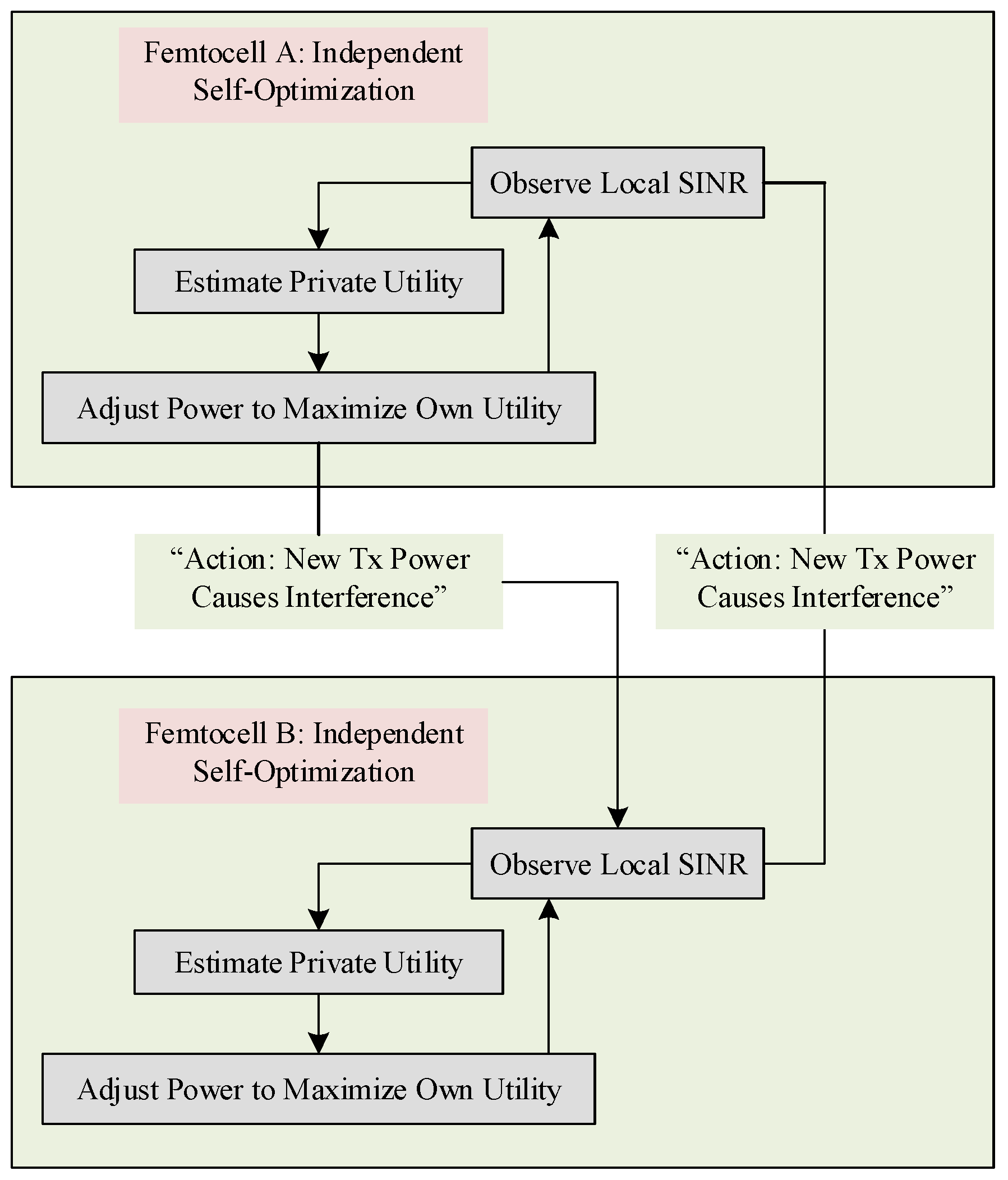
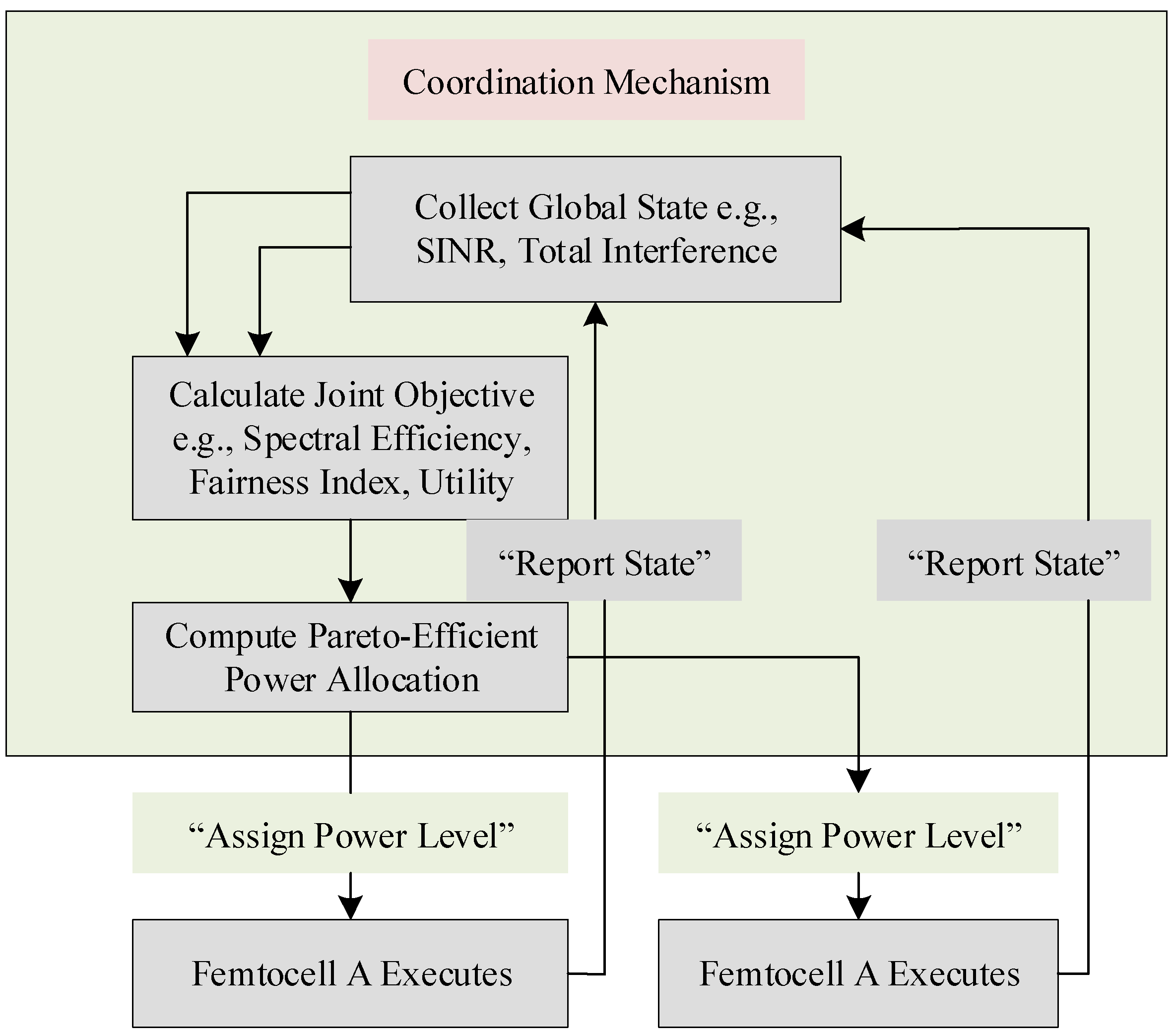

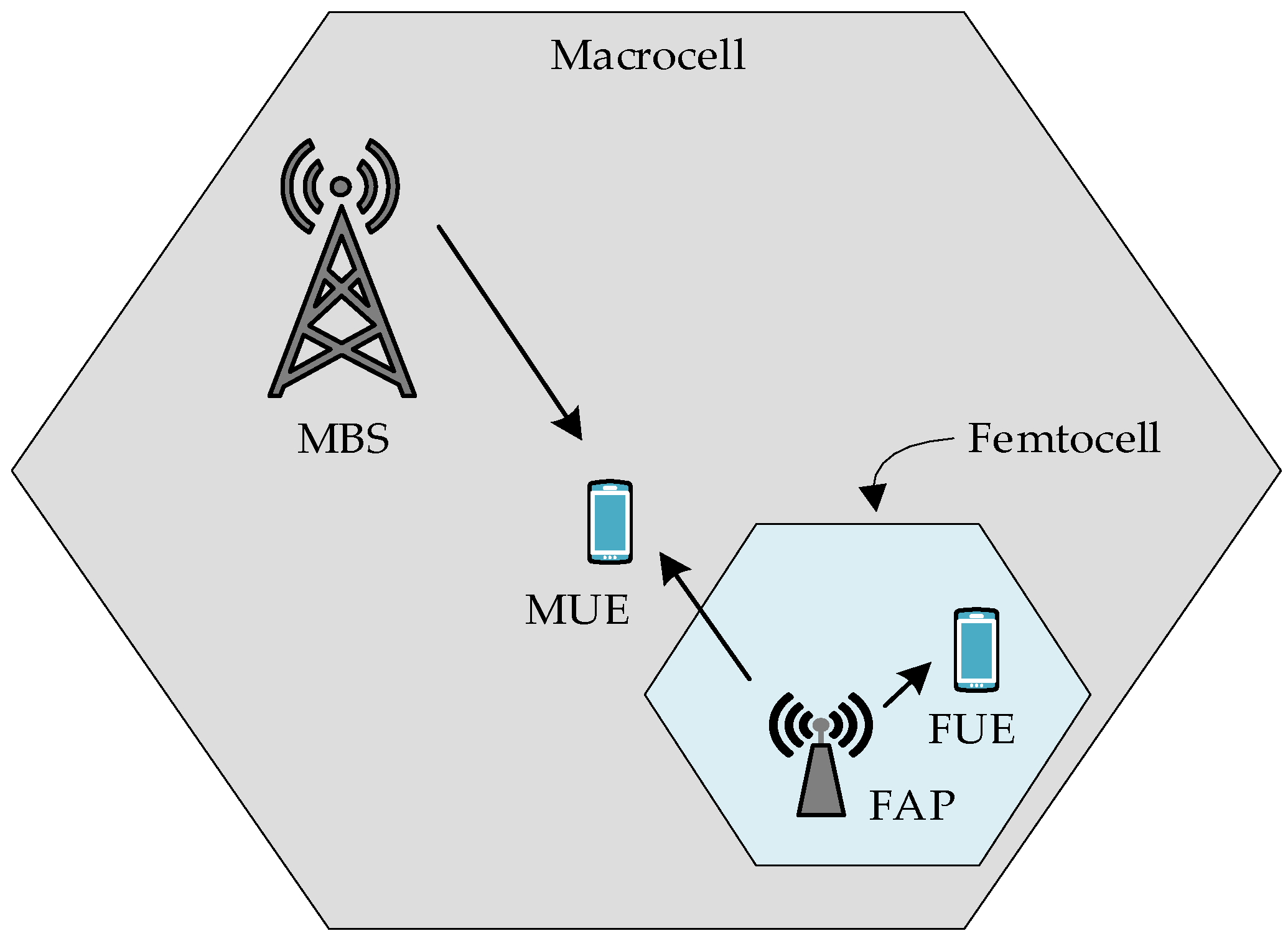
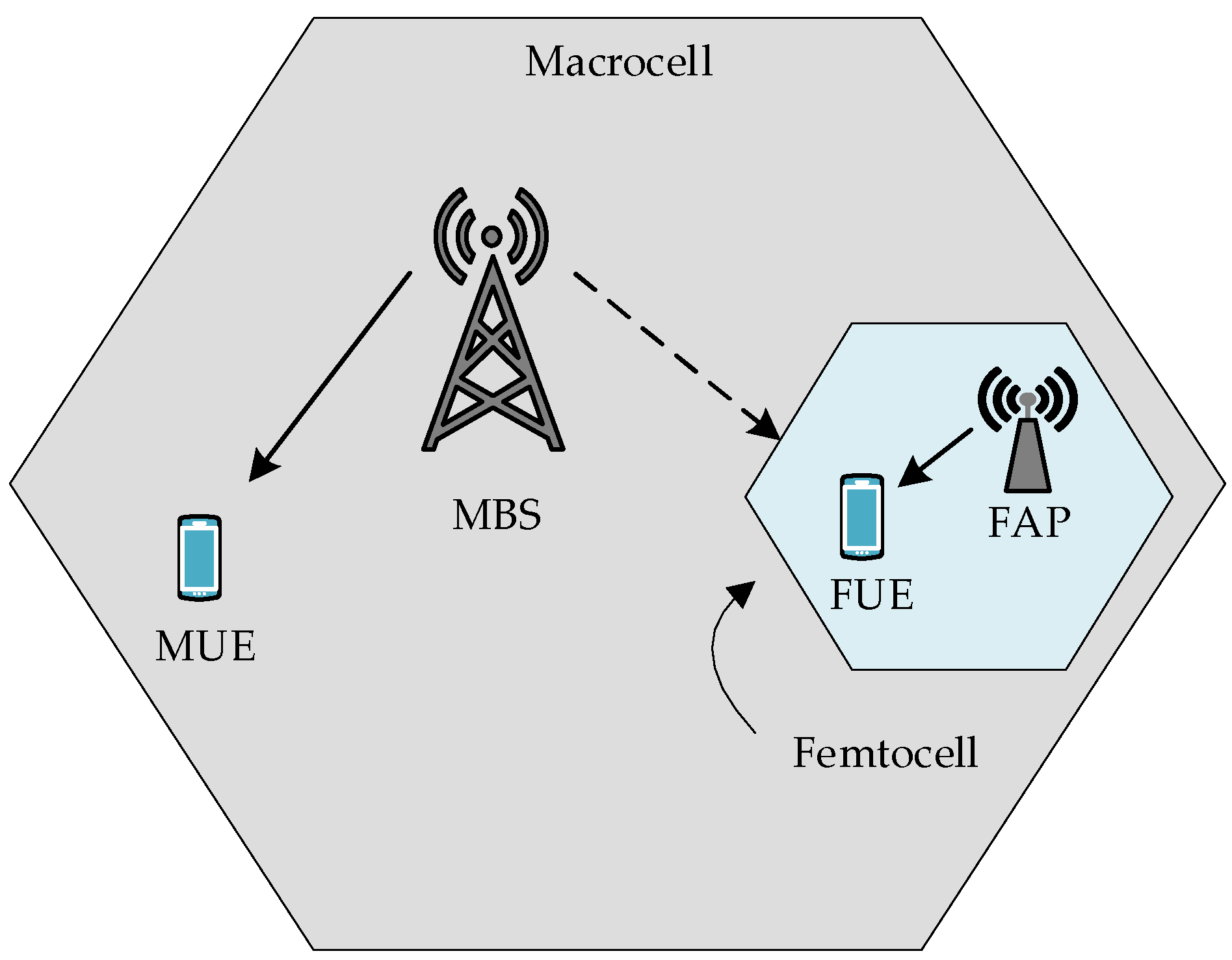





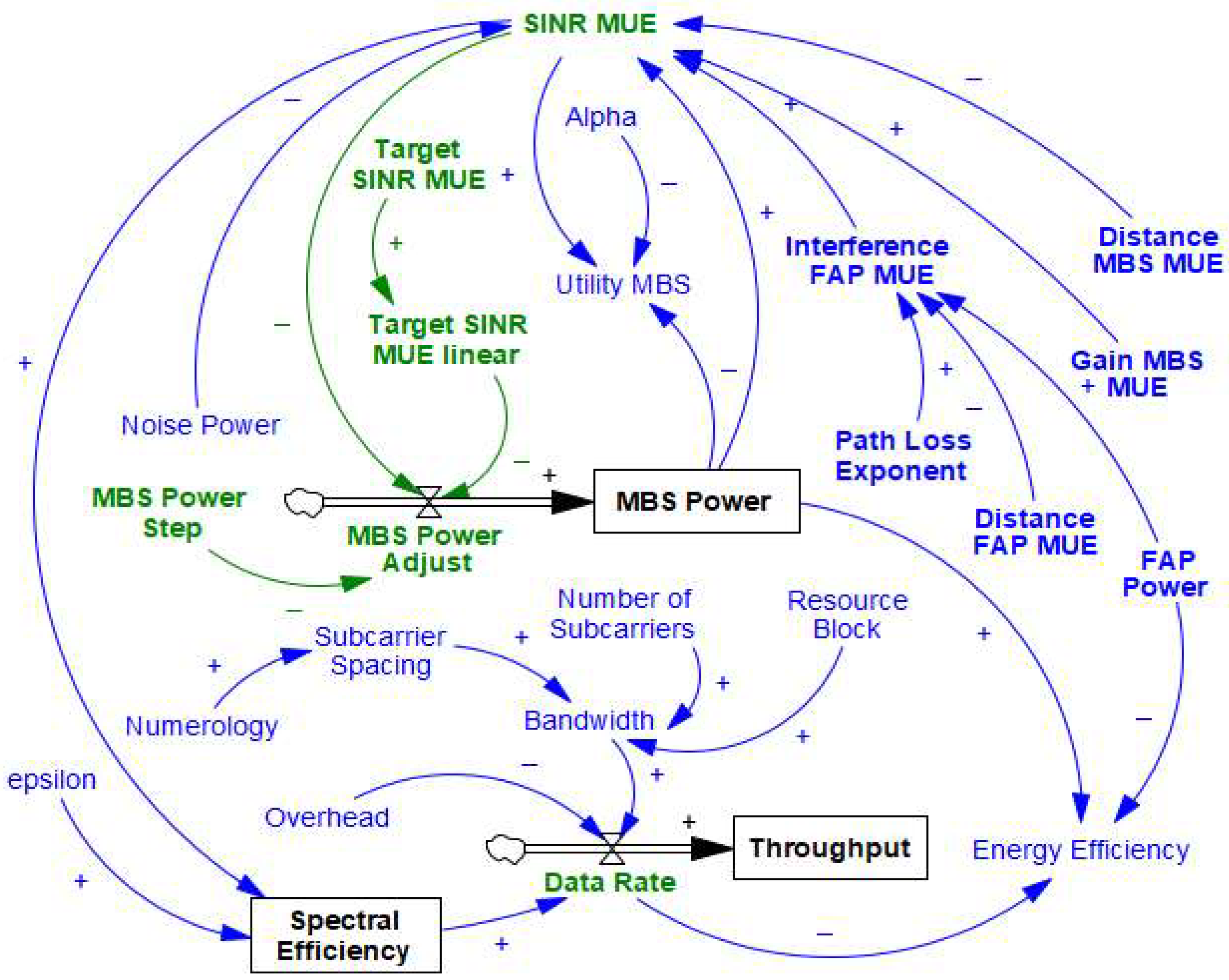
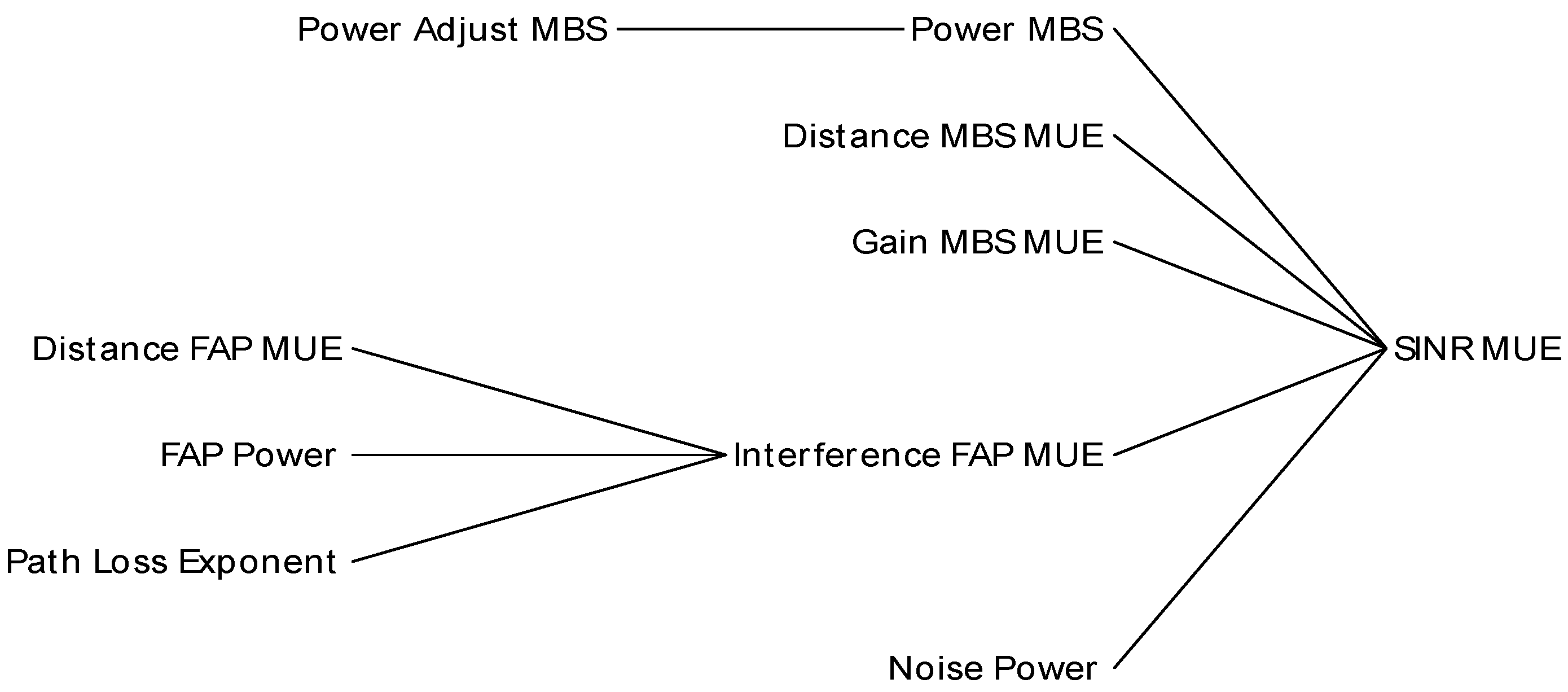



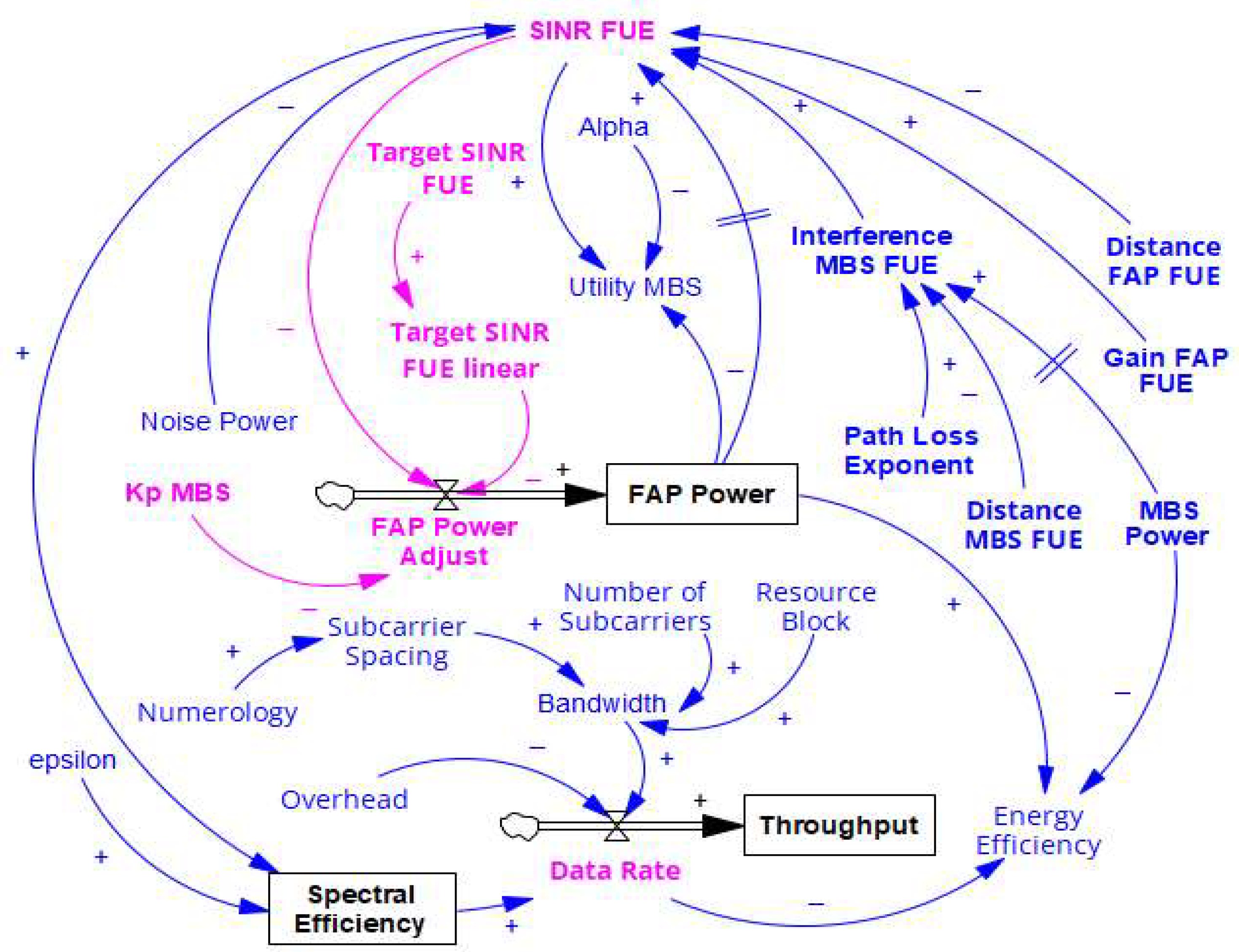
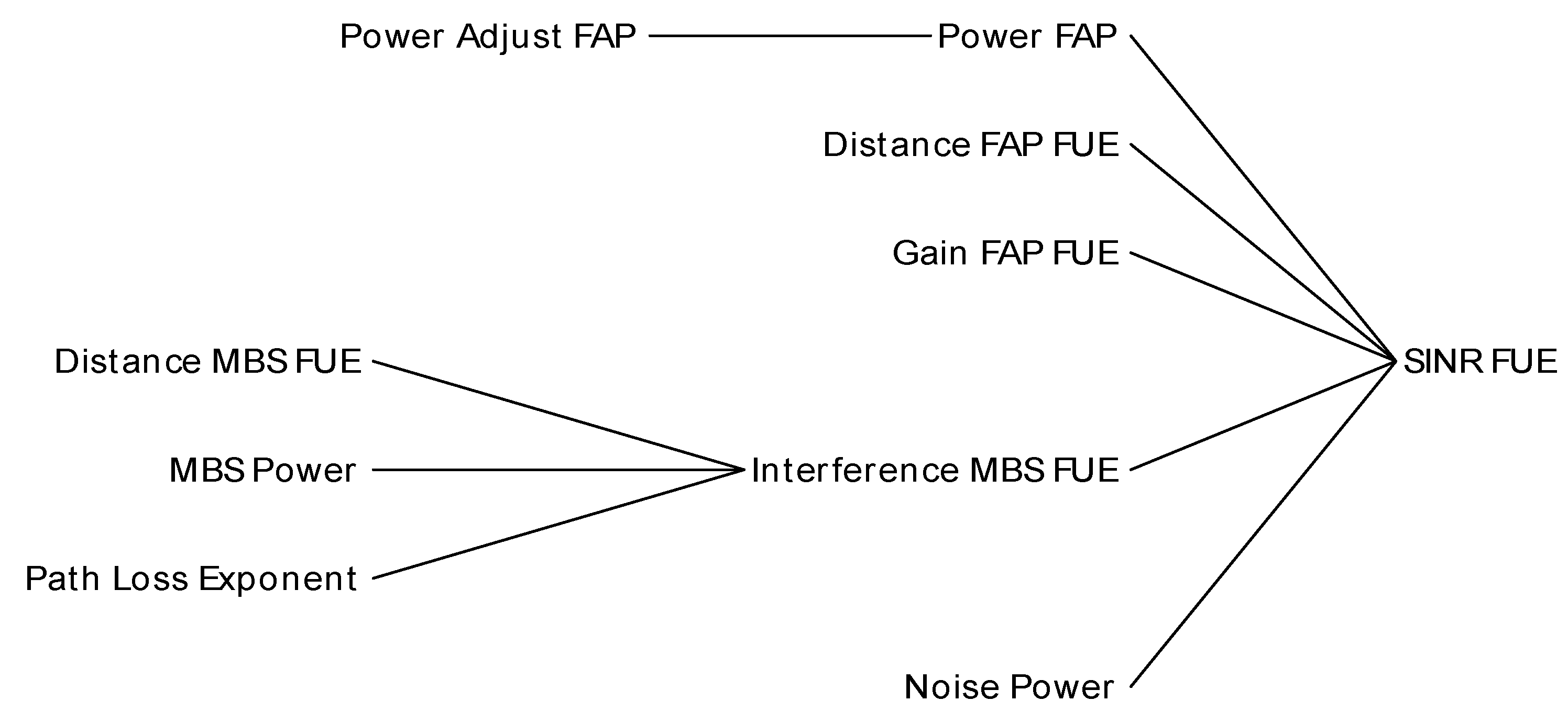


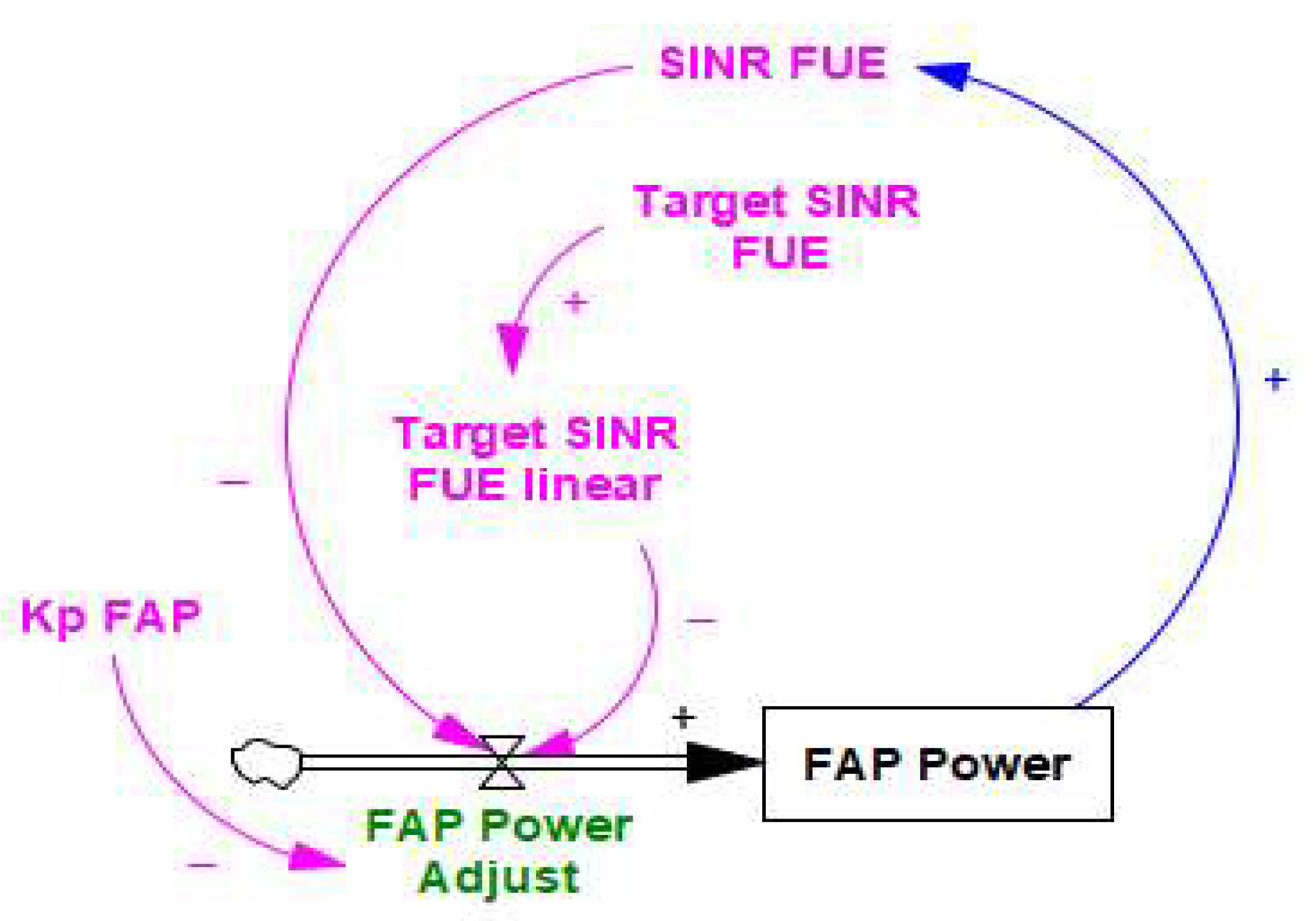
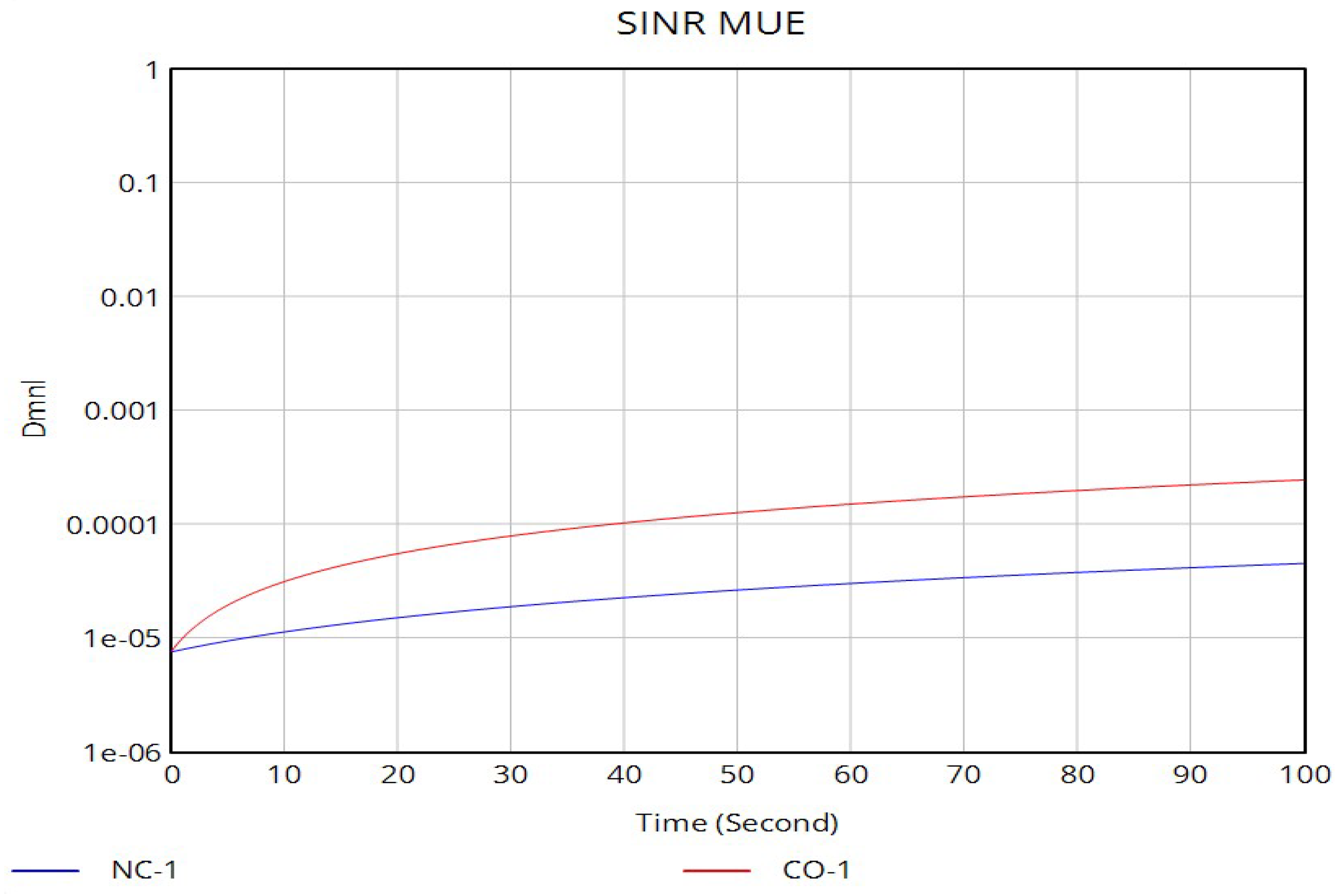
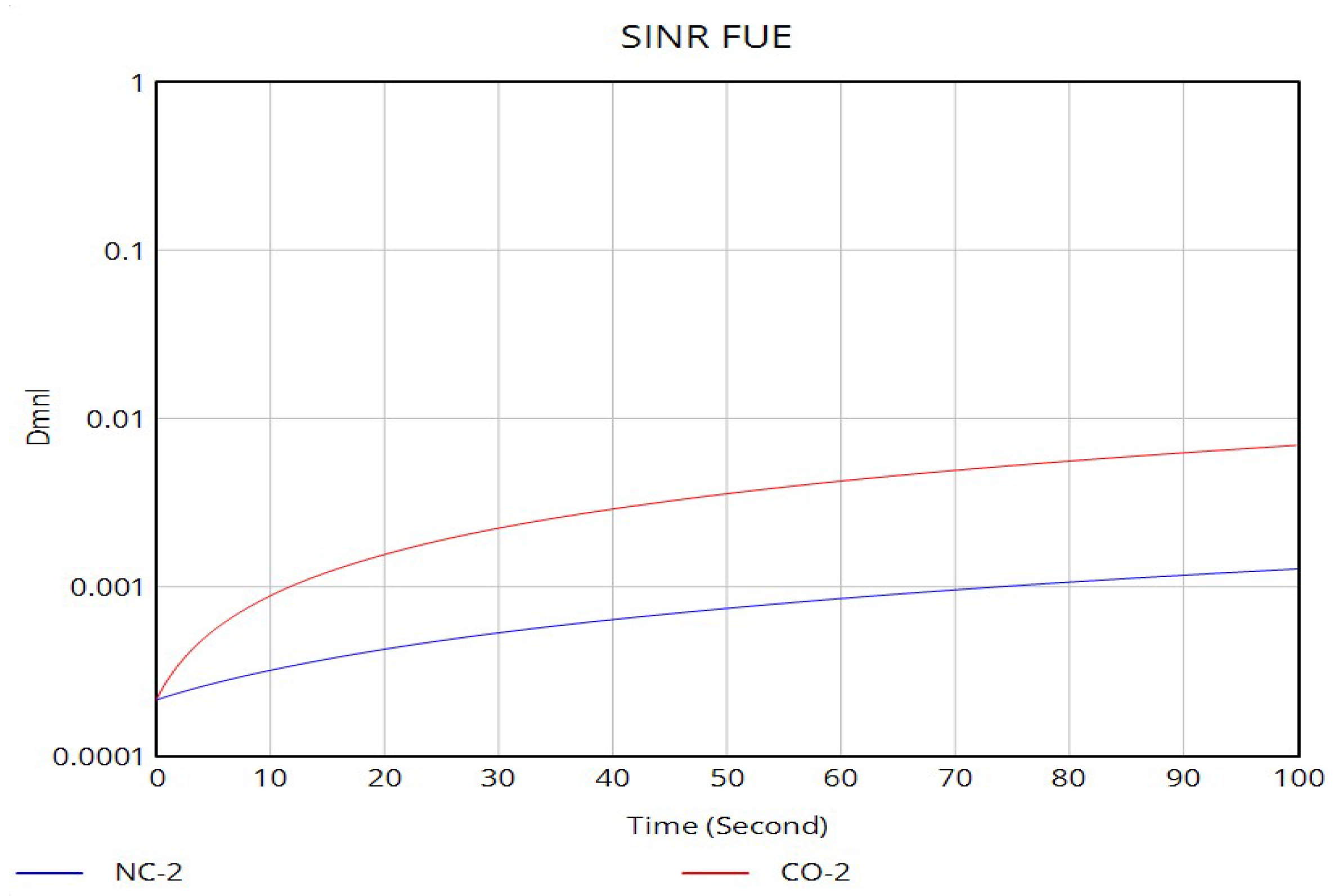
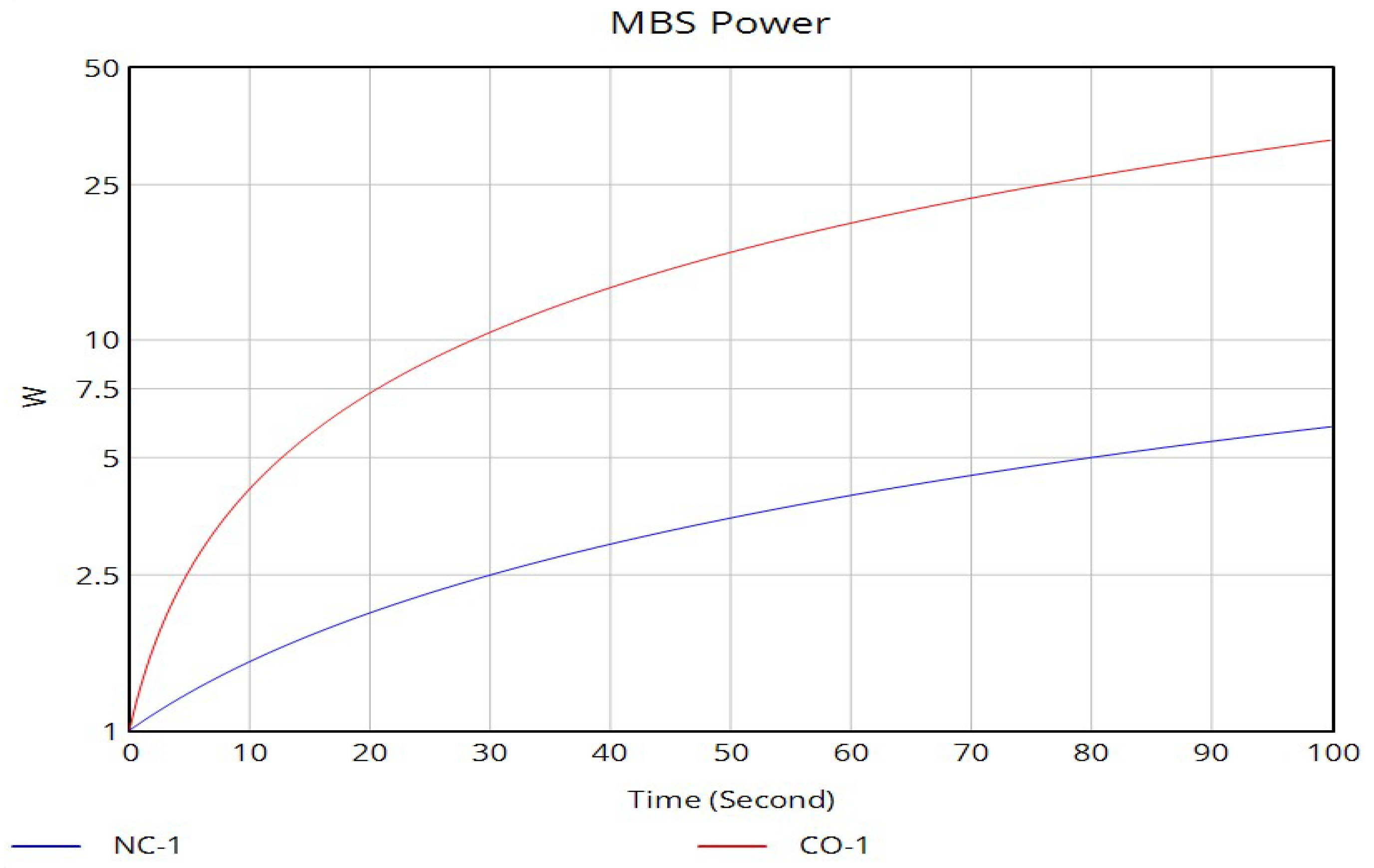
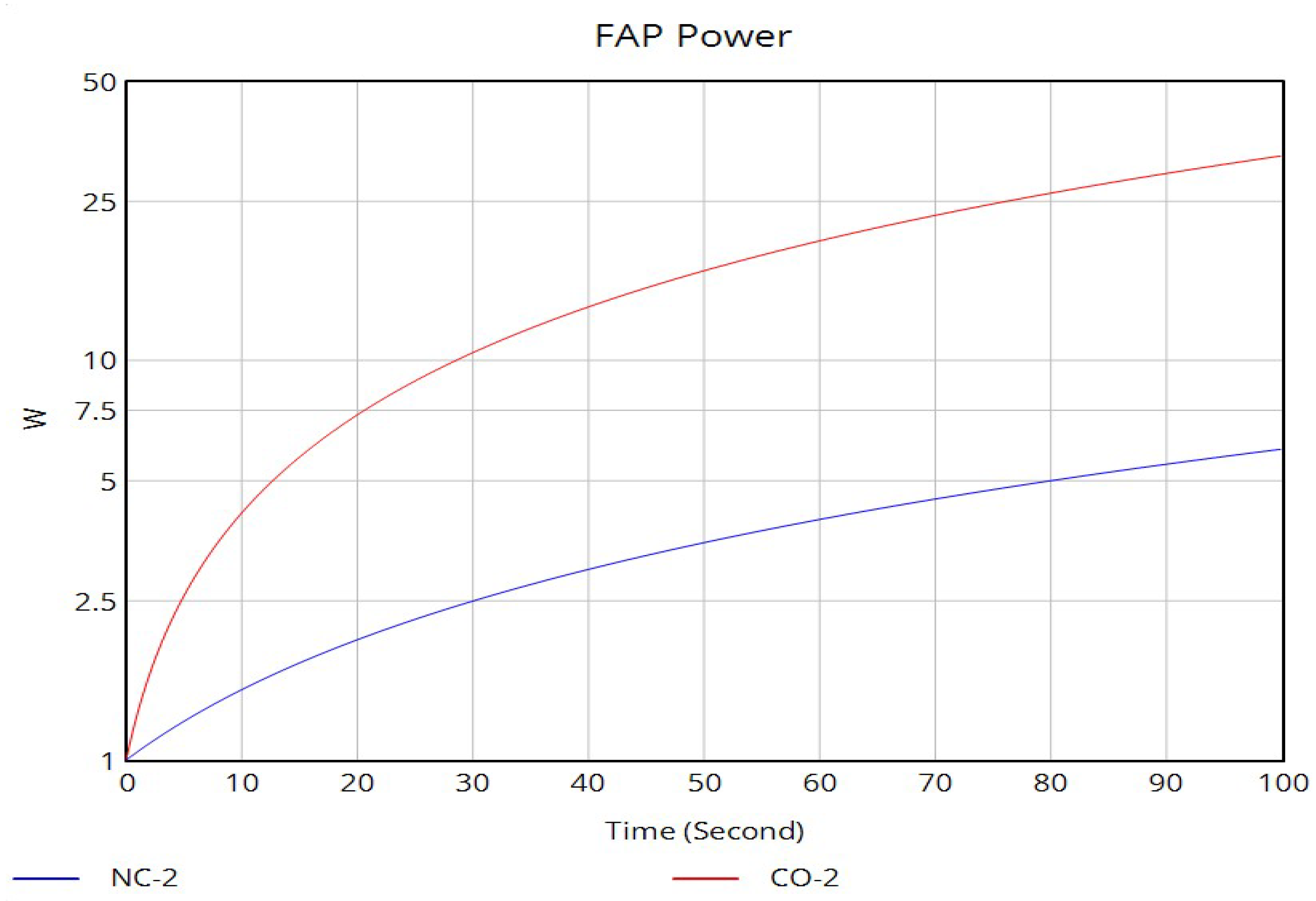
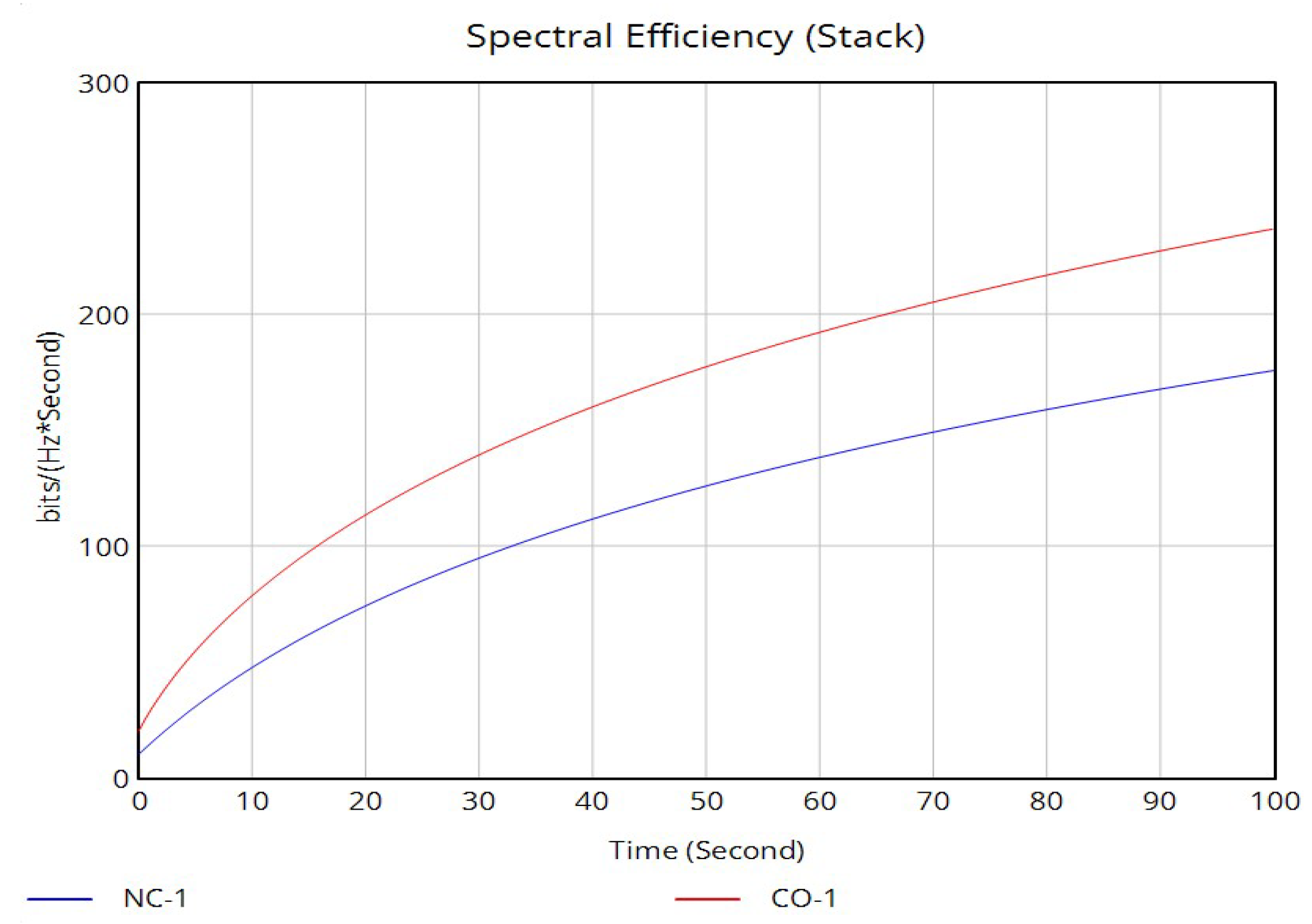



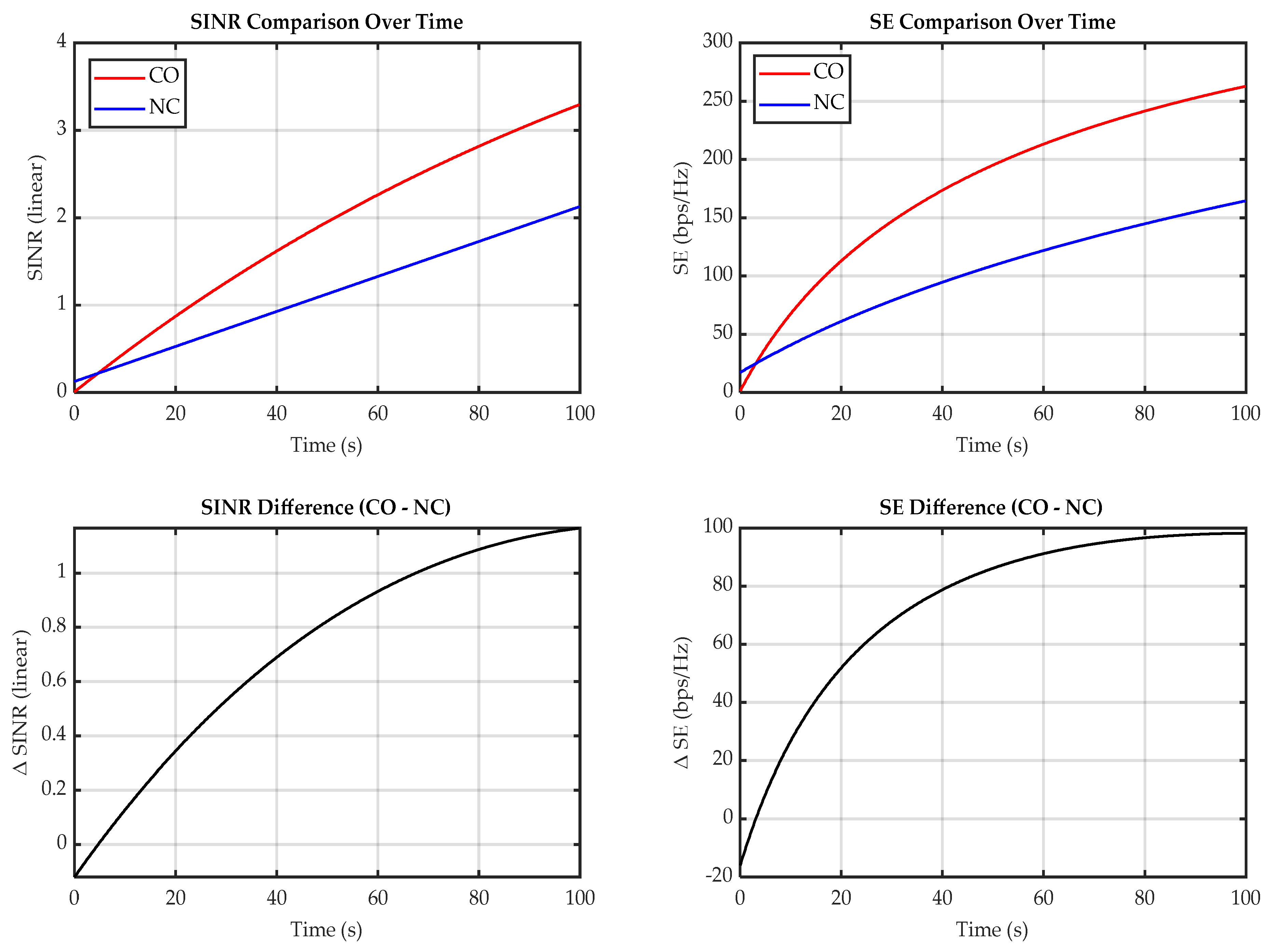
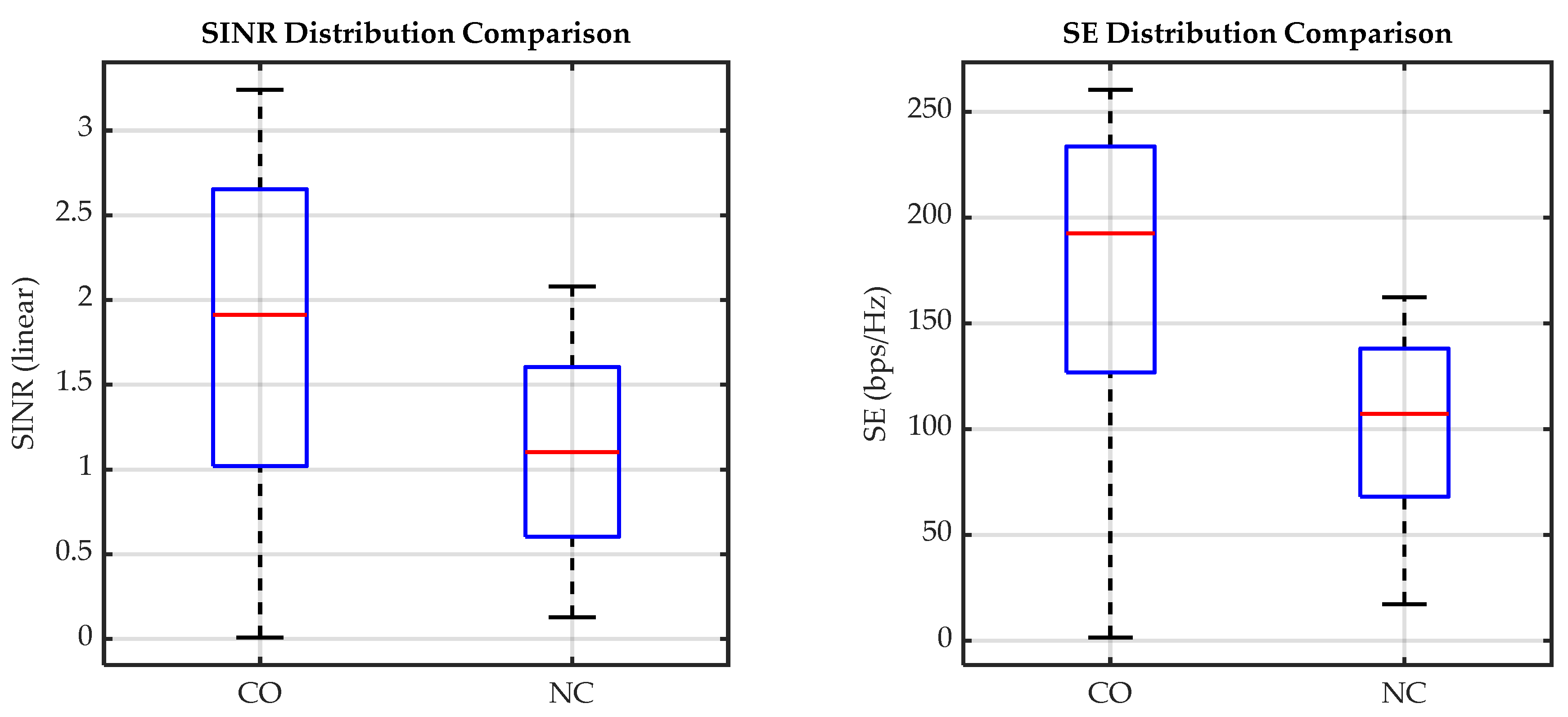
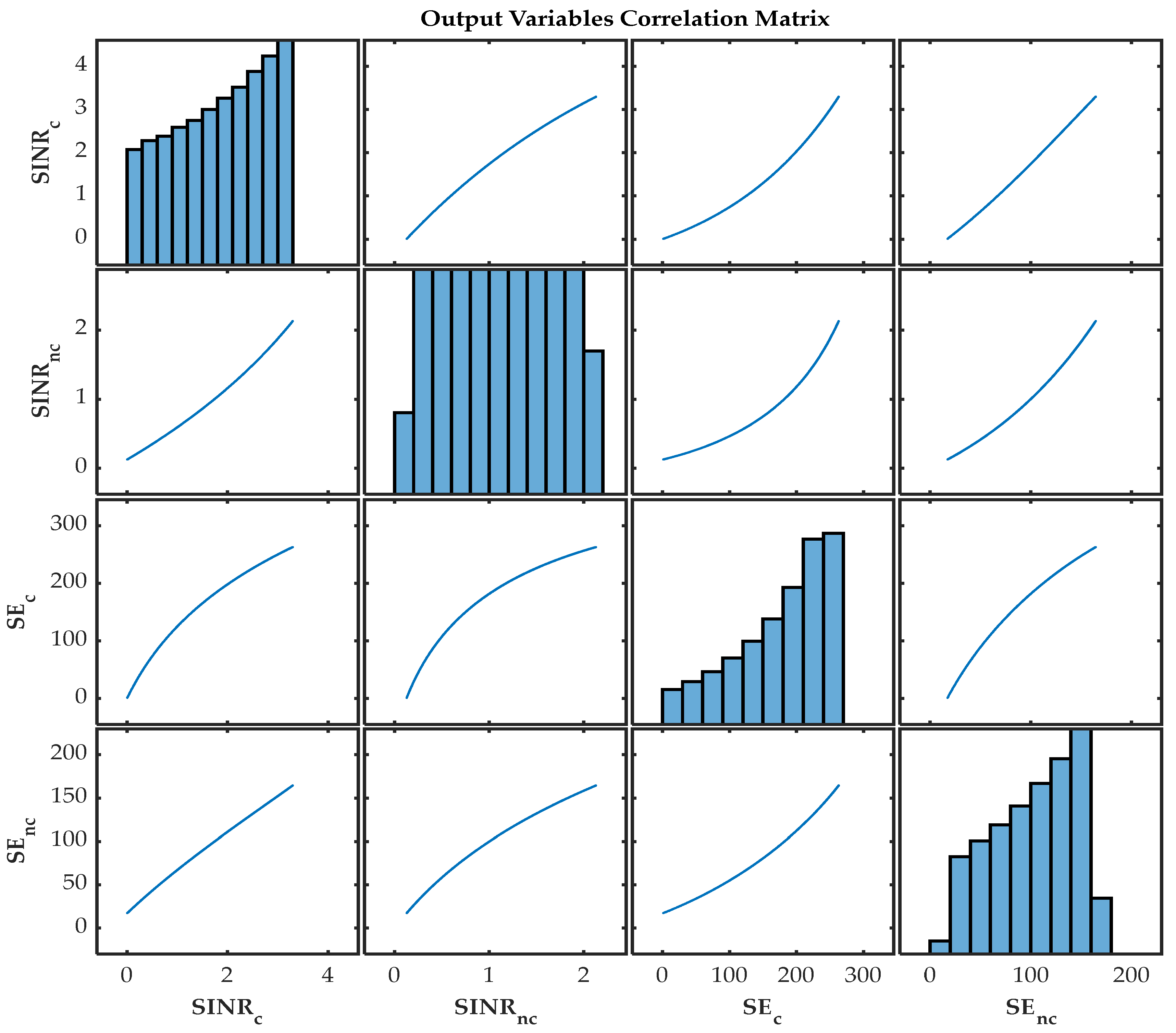
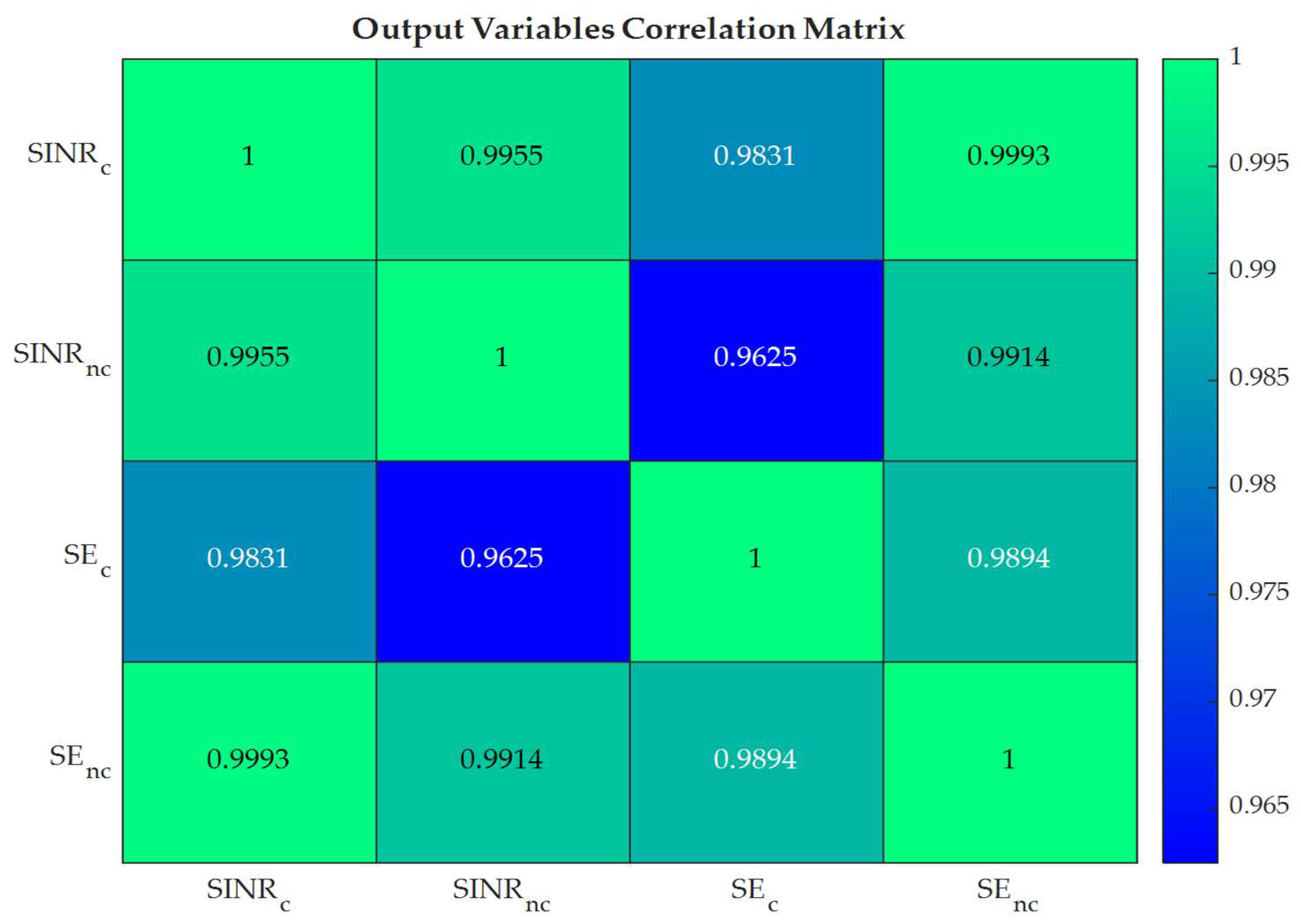
| Source | Year | Approach(es) * | Contribution(s) | Limitation(s)/Future Work |
|---|---|---|---|---|
| Nasir and Guo [17] | 2019 | DL |
| Future research could investigate more effective and readily adjustable training and exploration plans that can adjust to the multi-agent setting’s environmental non-stationarity. |
| Sun et al. [18] | 2019 | MLT |
| To apply ML-based paradigms with open datasets and environments, more research is necessary. |
| Pan et al. [19] | 2018 | DBIA |
| SIC decoding in NOMA systems is impaired by co-channel interference from spectrum-sharing D2D pairs. Addressing this limitation requires future work on integrated power control and constrained channel allocation schemes. |
| Chincoli and Antonio [20] | 2018 | MLT |
| To further validate the proposed model, a subsequent study could perform an extensive comparative analysis with alternative simulation frameworks, thereby identifying areas for improvement and solidifying its credibility. |
| Yoon et al. [21] | 2018 | MILP |
| The proposed algorithms offer a viable strategy for addressing persistent power control issues in small-cell networks, specifically in femtocell and picocell architectures. |
| Selim et al. [22] | 2019 | PCA |
| Subsequent research could benchmark the power control efficiency and outage probability of underlying D2D communication in UAV-assisted networks, directly comparing OMA and NOMA paradigms. |
| Xiao and Yang [23] | 2018 | JIM |
| Having addressed interference in cooperative small cells, subsequent work could examine interference management in noncooperative small-cell deployments. |
| Yang et al. [24] | 2018 | DPC |
| Future research could explore the synchronization of downlink and uplink slots as well as account for users’ non-ideal energy harvesting characteristics. |
| Madani [25] | 2018 | DPC |
| The effectiveness of both NOMA and OMA schemes could be assessed using small cells. |
| Sboui et al. [26] | 2019 | DPC |
| As a key 5G technology, HetNets improve energy efficiency; therefore, researching the energy footprint of multi-radio interfaces in IoT and user applications is a compelling direction for future work. |
| Elhattab et al. [27] | 2022 | DPC |
| Leveraging advances in cloud computing and Cloud Radio Access Network (C-RAN) architectures can significantly reduce algorithm runtime, thereby alleviating computational complexity. |
| Wang et al. [28] | 2020 | DPC |
| To enhance the tractability of these complex scenarios, subsequent studies should focus on formulating efficient algorithms or heuristic methods that simplify the nonlinear approximation without substantially compromising accuracy. |
| Liu et al. [29] | 2019 | DPC |
| Subsequent work could develop a unified framework for dynamic networks that leverages transmission patterns for online joint scheduling and power allocation while employing decomposition methods and distributed computation to ensure tractability. |
| Du et al. [30] | 2020 | DL |
| The application of Deep Reinforcement Learning (DRL) presents a significant opportunity for advancing problem-solving capabilities in this domain. Subsequent research should validate its performance within 5G and next-generation network architectures. |
| Zhang et al. [31] | 2020 | DL |
| Future work should explore the deployment of the Genetic Algorithm (GA) in 5G and B5G systems to evaluate its scalability and performance. |
| Meng et al. [32] | 2020 | DL |
| Critical resource management tasks in communication networks—such as user scheduling, channel management, and power allocation—are well-suited for solutions based on the deep deterministic policy gradient (DDPG) algorithm. |
| Zhang et al. [33] | 2020 | DPC |
| To enhance the practical relevance of this work, subsequent studies could adopt a nonlinear energy harvesting model and explore its integration with multi-antenna technologies like massive MIMO. |
| Liu and Simeone [34] | 2021 | DPC |
| Future research should pursue several avenues: optimizing the channel inversion threshold for learning under privacy–power trade-offs, generalizing the model to multi-hop D2D topologies, and investigating digital transmission schemes where quantization enhances privacy preservation. |
| Scenario 1 | |||
|---|---|---|---|
| Flows (Rates) | Description | Unit | |
| MBS Power Adjustment | IF THEN ELSE (SINR_MUE < Target SINR MUE linear, MBS Power Step, -MBS Power Step) | Noncooperative Power Control | 1/W |
| Data Rate MUE | Bandwidth ∗ log(2,1 + SINR_MUE) | Data rate for MUE (Shannon capacity equation) | bps |
| Stock (Levels) | Description | Unit | |
| MBS Power | INTEG (MBS Power Adjustment, Initial Value) | Feedback-based adjustment | W |
| Spectral Eff MUE | LOG(2,1 + SINR) | Spectral efficiency (function of SINR) | bps/Hz |
| Throughput MUE | Bandwidth ∗ log(2,1 + SINR_MUE) | Data rate for MUE (function of SINR) | bps |
| Auxiliaries | Description | Unit | |
| Interference MBS to FUE | MBS Power/Distance MBS to FUE Path Loss Exponent | Interference from MBS to FUEs | W |
| SINR_MUE | (MBS Power ∗ Gain FAP_FUE)/ (Distance MBS MUE^2)/(Interference FAP MUE + Noise Power) | Signal-to-Interference-plus-Noise Ratio for MUE | Unitless |
| Utility MBS | LOG(2,1 + SINR) − Alpha ∗ MBS Power | Utility function (for game theory scenarios) | Unitless |
| Scenario 2 | |||
|---|---|---|---|
| Flows (Rates) | Description | Unit | |
| FAP Power Adjustment | IF THEN ELSE (SINR_FUE < Target SINR FUE linear, FAP Power Step, -FAP Power Step | Noncooperative Power Control | 1/W |
| Data Rate FUE | Bandwidth ∗ log(2, 1 + SINR FUE) | Data rate for FUE (Shannon capacity equation) | bps |
| Stocks (Levels) | Description | Unit | |
| FAP Power | INTEG((Target SINR FUE—SINR FUE) ∗ Power Adjustment Factor, Initial FAP Power) | Feedback-based adjustment | W |
| Spectral Eff FUE | LOG(2,1 + SINR FUE) | Spectral efficiency (function of SINR) | bps/Hz |
| Throughput FUE | Bandwidth ∗ log(2, 1 + SINR FUE) | Data rate for FUE (function of SINR) | bps |
| Auxiliaries | Description | Unit | |
| Interference MBS to FUE | MBS Power/Distance MBS to FUE Path Loss Exponent | Interference from MBS to FUEs | W |
| SINR FUE | (FAP Power ∗ Gain FAP FUE)/ (Distance FAP FUE^2)/(Interference MBS FUE + Noise Power) | Signal-to-Interference-plus-Noise Ratio for MUE | Unitless |
| Utility FAP | LOG(2,1 + SINR)—Alpha ∗ FAP Power | Utility function (for game theory scenarios) | Unitless |
| Parameter | Value | Description | Unit |
|---|---|---|---|
| Bandwidth | 1 × 106 | Channel Bandwidth | MHz |
| Noise Power | Range: 1 × 10−10–1 ×10−9 | Thermal Noise Power | W |
| MBS Power | Range: 10–40 | MBS Transmit Power | W |
| FAP Power | Range: 0.1–1 | FAP Transmit Power | W |
| Path Loss Exponent | 2.0 | Path loss factor | Unitless |
| Target SINR FUE linear | 10 | Target SINR (in linear scale) | Unitless |
| Power Step | ±0.05 | Power adjustment steps (MBS and FAP) | Unitless |
| Kp MBS, Kp FAP | 0.1 | Power adjustment factor | Unitless |
| Target Utility | 3 | Target SINR (in linear scale) | Unitless |
| Distance MBS MUE | 200 | Extended distance between MBS and FUE | m |
| Distance FAP MUE | 30 | Extended distance between FAP and MUE | m |
| Distance MBS FUE | 100 | Extended distance between MBS and FUE | m |
| Distance FAP FUE | 25 | Extended distance between FAP and MUE | m |
| Gain FAP FUE | 1 × 10−3 | Channel Gain from FAP to FUE | Unitless |
| Gain MBS MUE | 1 × 10−4 | Channel Gain from MBS to FUE | Unitless |
| Alpha | 1 × 10−6 | Power cost factor | 1/W |
| Numerology | Range: 0, 1, 2, 3, 0,1,2,3,4 | Numerology (an OFDM parameter) | Unitless |
| Overhead | Range: 0.1, 0.1,0.2 | Estimated overhead | Unitless |
| Number of subcarriers | 12 | Aggregated component carriers | Unitless |
| Subcarrier spacing | 15,000 | Subcarrier spacing | Hz |
| Parameter | Approach | Mean | Median | Performance |
|---|---|---|---|---|
| SINR | CO NC | 1.850426 1.127532 | 0.946099 0.578324 | SINR Average Improvement: 58.82% |
| SE | CO NC | 176.942005 103.198157 | 69.246644 41.488964 | Average Improvement: 69.03% |
Disclaimer/Publisher’s Note: The statements, opinions and data contained in all publications are solely those of the individual author(s) and contributor(s) and not of MDPI and/or the editor(s). MDPI and/or the editor(s) disclaim responsibility for any injury to people or property resulting from any ideas, methods, instructions or products referred to in the content. |
© 2025 by the authors. Licensee MDPI, Basel, Switzerland. This article is an open access article distributed under the terms and conditions of the Creative Commons Attribution (CC BY) license (https://creativecommons.org/licenses/by/4.0/).
Share and Cite
Netshikweta, N.R.; Sumbwanyambe, M.; Pandelani, T. Game-Theoretic Power Control Modeling for Interference Management in 5G Networks—A System Dynamics Approach. Telecom 2025, 6, 89. https://doi.org/10.3390/telecom6040089
Netshikweta NR, Sumbwanyambe M, Pandelani T. Game-Theoretic Power Control Modeling for Interference Management in 5G Networks—A System Dynamics Approach. Telecom. 2025; 6(4):89. https://doi.org/10.3390/telecom6040089
Chicago/Turabian StyleNetshikweta, Nthambeleni Reginald, Mbuyu Sumbwanyambe, and Thanyani Pandelani. 2025. "Game-Theoretic Power Control Modeling for Interference Management in 5G Networks—A System Dynamics Approach" Telecom 6, no. 4: 89. https://doi.org/10.3390/telecom6040089
APA StyleNetshikweta, N. R., Sumbwanyambe, M., & Pandelani, T. (2025). Game-Theoretic Power Control Modeling for Interference Management in 5G Networks—A System Dynamics Approach. Telecom, 6(4), 89. https://doi.org/10.3390/telecom6040089






